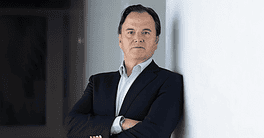Ilan Bahar, co-head of BMO Capital Markets’ Global Metals & Mining Group—winner of Best Investment Bank in Metals & Mining—considers what’s ahead in this volatile sector.
Global Finance: Metals & mining has proven particularly sensitive to geopolitical shifts. How are you guiding your clients through this landscape?
Ilan Bahar: In the volatile environment they are experiencing today, it is important that our clients focus on long-term macro fundamentals. For example, energy transition and electrification trends are not going away and the need for critical minerals is not abating. We believe longer term supply and demand fundamentals will persist through this period of volatility, with strong demand continuing a long-term bullish cycle for key commodities that support energy transition.
Gold and silver prices are testing all-time highs as precious metals continue to be seen as a natural hedge to broader market dislocation. So for our clients, it is important not to let short-term, reactionary decision-making impair their long-term strategic priority to build shareholder value.
GF: Global metals dealmaking slowed last year, but BMO still delivered impressive results in this sector. Is your deep industry expertise the key differentiator, or are additional elements contributing to your success?
Bahar: BMO has remained steadfast in its commitment to the sector. Next year, we will be hosting the 35th edition of our annual Global Metals, Mining & Critical Minerals conference. We are proud to say it is the leading conference in the world in the sector, setting the tone for the calendar year for both corporate clients and the institutional investor community. We are proud of our organization’s deep sector knowledge and the strength of our client relationships across the entire commodity complex.
GF: Does the current macroeconomic backdrop suggest a possible uptick for M&A activity in metals & mining going forward?
Bahar: We actually have seen a reasonable amount of consolidation among junior and intermediate producers where the industrial logic of the combination is strong and creates synergies. The combination provides increased exposure to current metal prices, and the opportunity presents itself to become larger and more relevant to investors in the sector.
Size brings added liquidity and, in theory, more investor attention. Large-cap consolidation in the gold space was extremely active in the past few years, resulting in a few clear industry leaders in gold—Newmont, Agnico and Barrick in North America—and we are seeing the next wave of consolidation now among the intermediates and juniors.
We expect producers looking to bolster their longer-term development pipelines through earlier-stage acquisitions to utilize strong cash positions for future development and, where the opportunity exists, to structure accretive transactions, given that earlier-stage companies trade at large valuation discounts to the producers. We have seen notable transactions in the silver space recently, driven by a relative scarcity value of primary silver assets.
GF: Government agencies and corporations are focusing on essential minerals and rare earth elements, recognizing their role in powering the AI revolution. Have you expanded your offerings in this space?
Bahar: We are attuned to the macroeconomic factors that will drive the increased importance of critical minerals to the world’s economic engine. The simplest demonstration of our commitment was the rebranding of our conference in 2023 to specifically include critical minerals in the name, but also by dedicating a portion of the agenda to them. In addition to our equity research commitment, we have investment bankers focused on critical minerals stationed across the globe, from our offices in Toronto, New York, London, Beijing, Vancouver, and Melbourne.
GF: Sustainable finance has historically followed boom-and-bust cycles. Does the current cycle represent a fundamental shift from this pattern?Bahar: Several sustainable technologies have now achieved a cost advantage over incumbent technologies; renewable power has the lowest marginal cost for power generation, and energy-efficiency technologies now have positive net present value for many investments. Those changes—combined with the continued differential demand for carbon-free electricity and enhancements to the power grid—mean that we are seeing a persistent demand for these technologies despite policy uncertainty in certain jurisdictions, and a continued long-term need for the metals and minerals that support those investments: copper, uranium, and critical minerals.



